Apollo 11
On July 20th 1969, history was made when the Apollo 11 space mission saw the first humans walk on the moon. It was just eight years after President Kennedy first laid down the challenge and the result remains one of the most iconic moments in modern history.
Setting off at 09:32 on 16th July, the 363-foot-long rocket commenced its incredible journey. Within a quarter of an hour, the crew were in orbit. Following one and a half laps of planet Earth, they were given the go-ahead to make their lunar approach. Whilst to us earthlings that may sound like the finishing stretch of the mission, it would be a full three days of travel before reaching lunar orbit. It almost makes an M25 rush hour commute seem positively rapid.
A day later still, Neil Armstrong and Buzz Aldrin entered the lunar module (named Eagle) to make the descent. Michael Collins, the third member of the crew remained on the command module Columbia, continuing to orbit. At 16:17 the Eagle finally landed and did so with just 30 seconds worth of fuel left. This will be a familiar feeling to overdraft-dwelling motorists around the globe. Nearly five hours later, Neil Armstrong uttered the immortal words: "That's one small step for a man, one giant leap for mankind" as the first human foot landed on the moon. A staggering 650 million viewers around the world are estimated to have watched it all unfold.
Apollo 11 Astronaut's Watches
Armstrong could equally have said: "That's one small step for a watch, one giant leap for Omega" because on his wrist was the unmistakable Speedmaster. It would have been true. The Swiss watchhouse has been capitalising on this event for over half a century and continues to do so to this day. Both timekeeper and stopwatch, the Speedy was designed from the outset to be a solid piece of wristwear. Water resistant, shockproof and able to withstand 12Gs of acceleration. The Speedmaster was the most capable watch for the job and Omega has maintained its position as the official watch of NASA ever since. It remains the only brand to be flight qualified to this day. So when someone asks, what watches did the Apollo 11 astronauts wear? You know the answer is an Omega Speedmaster ST 105.012.
Omega Speedmaster
Housed in a stainless steel case, early Speedmasters were powered by the beautiful manual wind calibre 321, complete with a column wheel chronograph mechanism. The outer bezel in anodised black aluminium with a highly legible tachymeter scale for those all-important flight calculations. Considered quite sizeable in its day at just under 40mm in diameter, the Speedmaster has stayed at around the same size for fifty years. Some variations including the automatic Speedmaster Reduced have been slightly smaller and some slightly larger but all fall well within sensible tool watch parameters.
There have also been iterations using different case materials, including titanium and 18ct gold. Mechanically there has been evolution too. The universally loved calibre 321 was eventually replaced by the 861 and then subsequently the 1861. Omega has continued its quest for fine-tuning and improvement. In recent years, it has moved some models across to its revolutionary low friction Co-Axial escapement, created by the great George Daniels. Often on bracelets but also available on straps, the Speedmaster has that unique ability of making aesthetic design changes without ever losing its DNA.
Speedmasters at Auction
Here at Fellows, we have been fortunate to see a vast array of Omega Speedmasters over the years. Vintage and modern, manual and automatic, analogue and digital, steel, titanium and even gold. Varying in price from low four-figure to high five-figure sums, there is something for everyone in the Speedmaster marketplace. In fact, with the latest Swatch X Omega ‘MoonSwatch’ collection, entry to the club has become even more affordable with a price tag of just over £200…IF you can find one. Who knows, maybe we will see one at auction soon!
Further reading
For anybody looking to learn more about Omega and the Speedmaster in particular, the book ‘Moonwatch Only’ is essential reading and highly recommended. In the meantime, here is a selection of some of our favourite Speedmasters from over the years to whet your appetite, including a Fellows house record-breaking Omega.
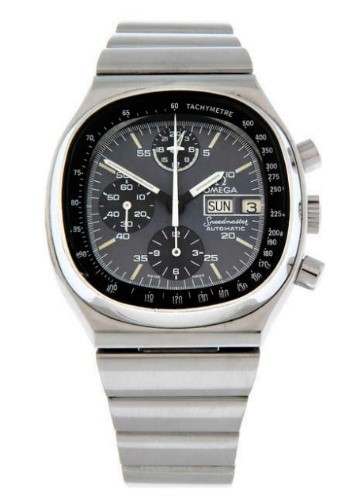
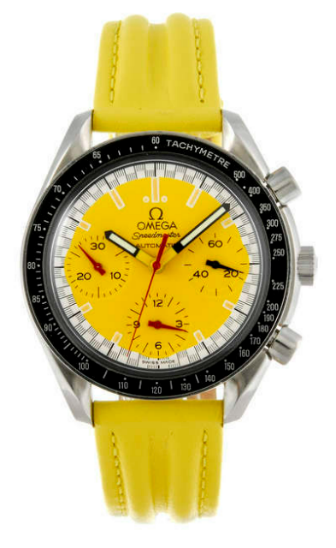
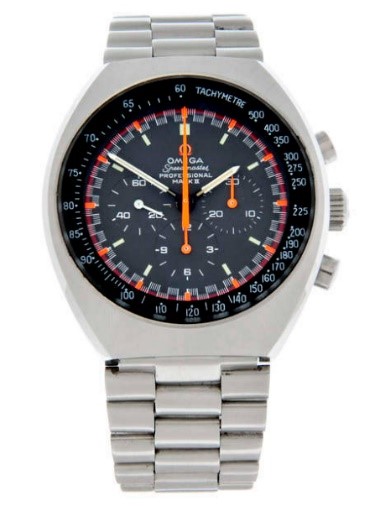
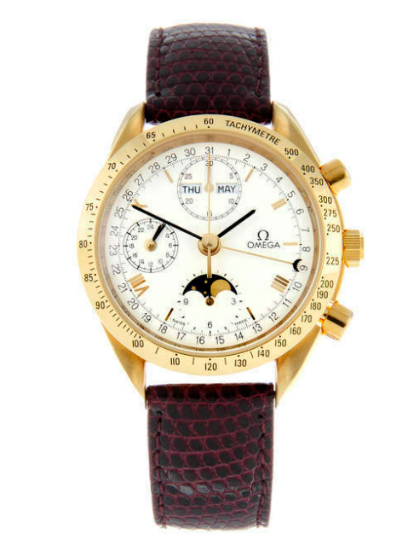
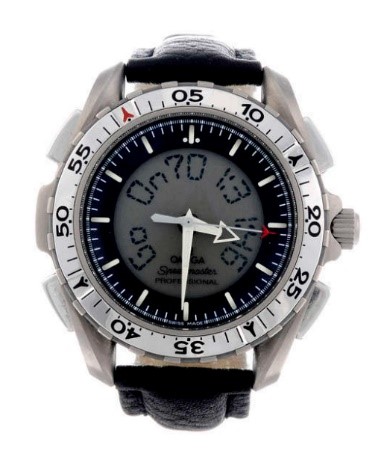
Omega Speedmaster X-33 at auction
A Speedmaster X-33 is "the perfect watch for Space X astronauts", according to GQ Magazine. This means that while you may not be able to acquire a vintage Omega Speedmaster as worn by the Apollo 11 astronauts, you could pick up one worn by their modern counterparts. Make sure to set up lot alerts on our website to find your perfect watch.
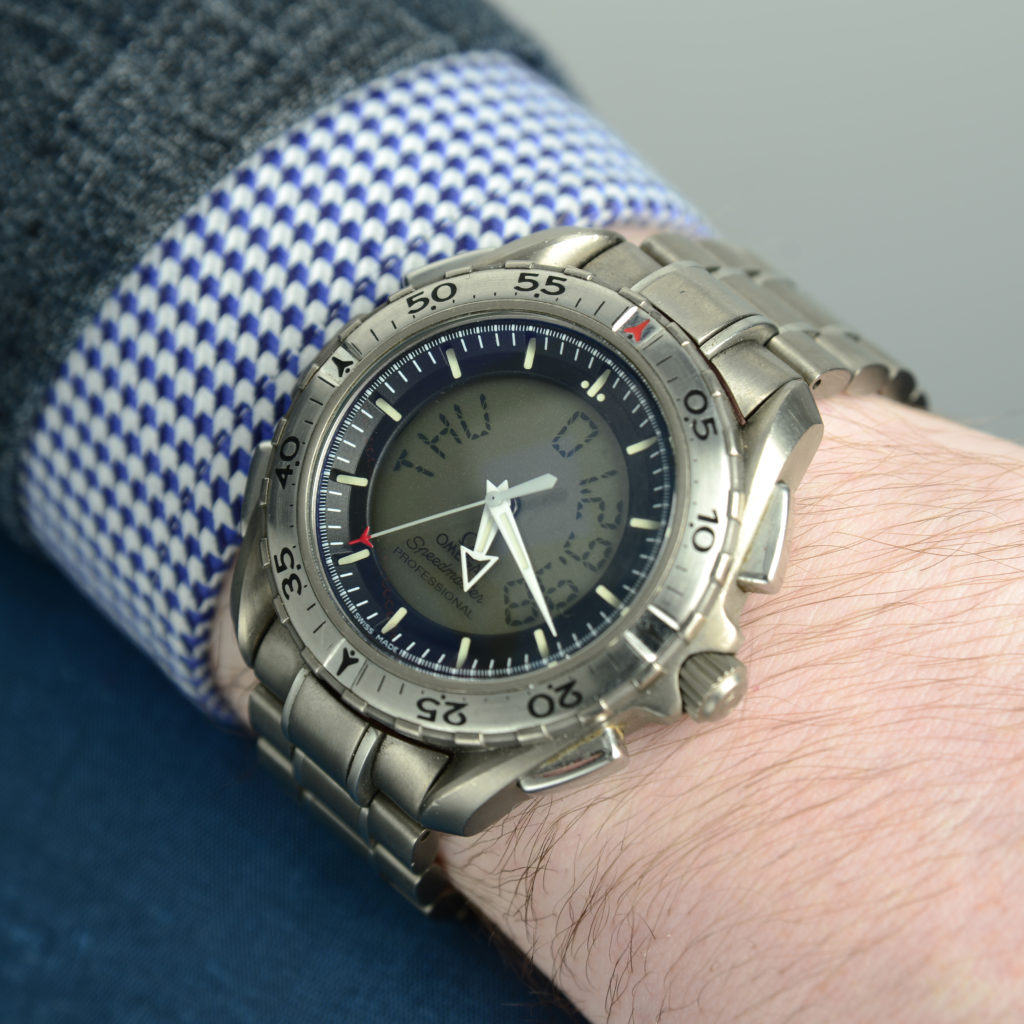
Record Breaking Omega Speedmaster | Pre-Apollo 11
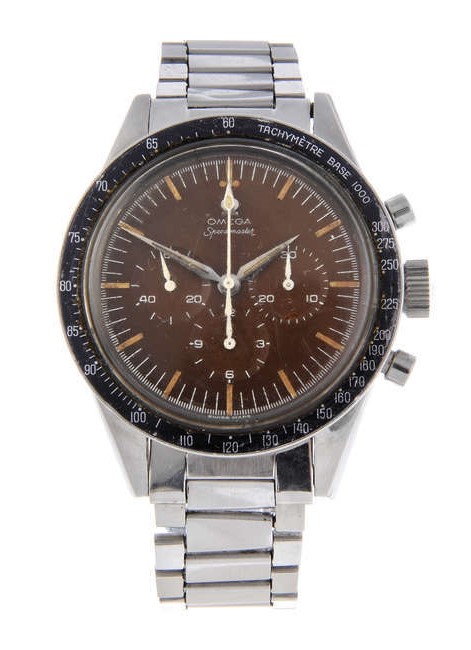
In October 2018, we sold an Omega Speedmaster over seven times its low estimate, breaking our house record for an Omega hammer price. It sold for a hammer price of £69,000, which is more than £88,000 including fees. You can read all about the exciting bidding here.
This Omega Speedmaster was the predecessor to the one worn by the Apollo 11 crew. It has a stainless steel case with a tachymeter bezel, referenced 2998-1, which is an early number. With a signed manual wind calibre 321, the Speedmaster has an alluring chocolate brown dial with luminous baton hour markers, and subsidiary recorder dials to three, six and nine.
Valuations
Do you have an Omega Speedmaster you would like to sell? If you are looking to find out how much your watch could be worth, you can speak to our specialists. Our valuations are free, with no obligation to sell with us. Our experts will value your watch with an estimate, so you can find out what it could achieve at auction.
The process is simple, so you can get a valuation now:
Fill in a form online. In addition, you can book an appointment to visit our offices in Birmingham and London. You can also book a virtual valuation appointment.












